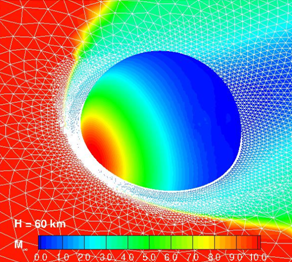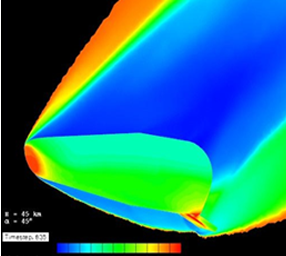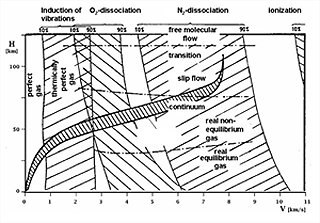
Atmospheric entry problem analysis
Atmospheric entry is the movement of human-made or natural objects as they enter the atmosphere of a celestial body from outer space in the case of Earth from an altitude above the Kármán Line,100 km.Because the kinetic energy is converted into heat very fast, so the objects without a heat shield are destroyed.
The hot plasma also interrupts a radio connection.
Along a typical re-entering orbit of a spacecraft the property of the gas and the flow change significantly.
It runs on because of the high temperatures occurring in thermodynamic and thermo chemical processes that influence the flow properties, or even dominate.
A space transportation system such as re-entry capsule like the figures enters with a speed of about 8 km/s into the upper layers of the atmosphere.
The largest part of its kinetic energy is released at a flight altitude of between 40 and 80 km to the air flowing around.
The temperatures appearing besides the involved gases which are a measure of the energy transferred on the single gas particles are so big that so-called high temperature effects appear.
These include the stimulation of internal degrees of freedom such as the vibration and dissociation of oxygen and nitrogen.
Computational Fluid Dynamics (CFD)
Computational fluid dynamics for aerothermodynamics and plasmas
Atmospheric entry Problem Analysis
Reaction Control System (RCS) Analysis for Missile and Re-entry Capsule
Modelling and Numerical Simulation of Multi-Physical Problems




